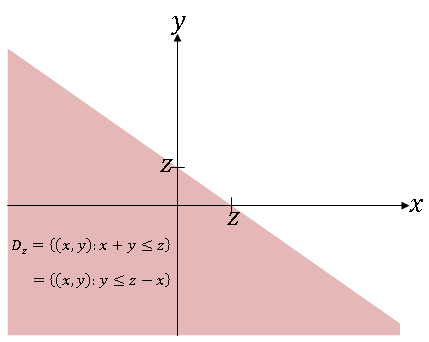(New page: Category:ECE600 Category:Lecture notes <center><font size= 4> '''Random Variables and Signals''' </font size> <font size= 3> Topic 13: Functions of Two Random Variables</font siz...) |
|||
| Line 48: | Line 48: | ||
\end{align}</math></center> | \end{align}</math></center> | ||
| − | So if X and Y are independent, and Z = X + Y, we can find f<math>_Z</math> by convolving f<math>_X | + | So if X and Y are independent, and Z = X + Y, we can find f<math>_Z</math> by convolving f<math>_X</math> and f<math>_Y</math>. |
'''Example''' <math>\qquad</math> | '''Example''' <math>\qquad</math> | ||
Revision as of 00:06, 4 November 2013
Random Variables and Signals
Topic 13: Functions of Two Random Variables
One Function of Two Random Variables
Given random variables X and Y and a function g:R$ ^2 $→R, let Z = g(X,Y). What is f$ _Z $(z)?
We assume that Z is a valid random variable, so that ∀z ∈ R, there is a D$ _z $ ∈ b(R$ ^2 $) such that
i.e.
Then,
and we can find f$ _Z $ from this.
Example $ \qquad $ g(x,y) = x + y. So Z = X + Y. Here,
and
If we now assume that X and Y are independent, then
Then,
So if X and Y are independent, and Z = X + Y, we can find f$ _Z $ by convolving f$ _X $ and f$ _Y $.
Example $ \qquad $


